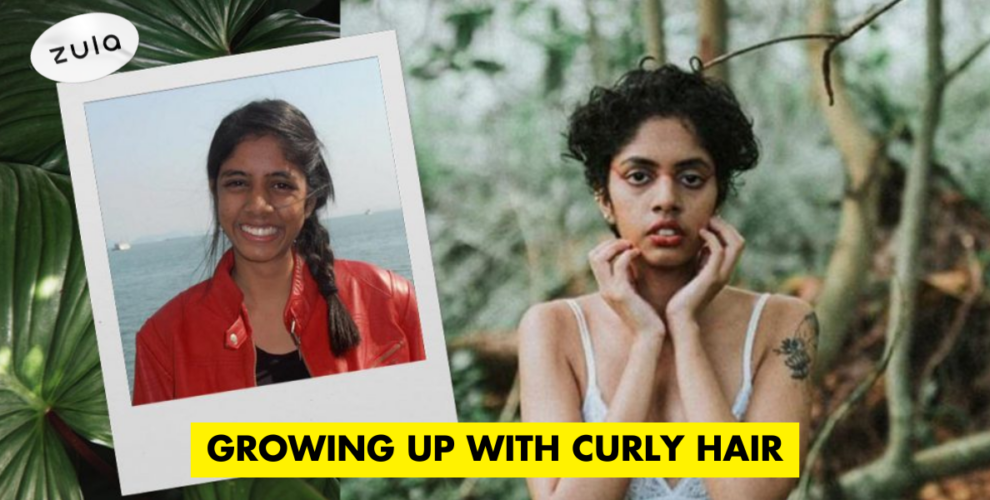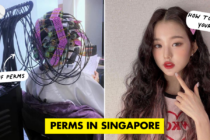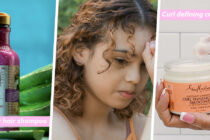Growing Up With Curly Hair
This piece is a submission by Deesha Menon.
One of the earliest lessons I learned about hair was that it was my “crowning glory”. The crown, in this case, was gendered: a gift of honour and feminine grandeur bestowed upon the woman alone. To think, at so young an age, that the soft locks that grew sporadically out of my tiny head could be a crown: a marker of royalty, the essence of a queen. To think I could be glorious.
I was the only one in my immediate family with curly hair. I was alerted to this fact when I was 12 or 13—I don’t think I thought much about what I looked like before that, at least in relation to other people. My sister had straight hair, and my mother and grandmother had their hair artificially straightened. That was my view of feminine beauty for most of my formative years: women with straight hair.
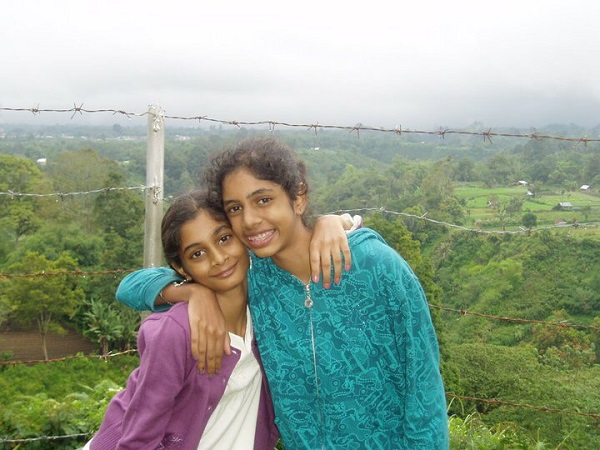
Me (right) at age 14 with my sister, whom I thought had the loveliest straight hair
Contents
Curly hair in school and on TV
Prior to the Instagram age, tangible beauty was limited to what I saw around me: my peers, my teachers and the adults in my life. In school, my friends sported bobs and bangs and perfect primary-school hairdos, with flyaway hairs at the end of a long day that made them look all the more adorable: messy, but presentable.
Actresses on television with their impeccably coiffed hair straddled a fine line of perceived perfection: were they ideal or dubiously unreal? Fran Drescher with her blowout curls on The Nanny was just as unreal as the wardrobe she managed to afford on blue-collar pay.
When, post-primary school, my hair reluctantly escaped the tight braids my grandmother used to fix them into and was left completely up to my discretion, I had no idea what to do with it. I couldn’t sport bangs or a bob without looking like a very large mushroom, and my flyaway hairs were a nightmare. I didn’t have obedient strands that would fall right back into place after P.E. (or worse, wind). I never would.
How do we reconcile what we want with what we have?
Also read:
Your O-Level Results Won’t Matter One Day—A Letter To Myself at 17
Embarking on a straight hair journey
At age 15, I decided that the two were diametrically opposed, so I gave myself up to the flat iron. The first time I had my hair temporarily straightened, the ends of this new, glossy mane fell to the centre of my back. It was the longest my hair had ever been. When the wind blew, my hair lifted and settled right back into place, like a graceful pirouetting ballerina. I got compliments. People told me I looked pretty, I looked mature, and that it ‘suited me’. So I listened.
Later that year, my mother asked me what I wanted for my birthday and I said “a rebond”. She understood and happily obliged, mostly because she had one too. And so began my unyielding journey with straight hair for the next 3 years.

Me at age 17 with rebonded hair
I cannot say, with any real certainty, that this new look—long, straight, glossy hair gathered up into a high ponytail (that barely needed combing!)—was my induction into the secret society of beautiful girls. But I definitely felt more confident: I no longer hid my curls in french braids, in buns, or under hairbands. I could slide off my hair tie after P.E. and refasten my ponytail in public—free of the fear that I’d look unkempt. I could come to school with wet hair and not worry that it would dry funny.
It took all of 3 years for me to finally realise that I was tired of the two-dimensionality that long, straight hair confines a woman to (here I don’t mean women in general; I merely mean womanhood as my reality). It wasn’t the hair that grew naturally out of my head, so how could it possibly match the humour and vigour that I exuded?
Embracing my curls
This debacle ends with me subjecting myself to yet another drastic change in hairstyle. Except this time, it was liberating. I chopped all my hair off—in classic breakup fashion—and let the stubborn, messy curls grow out of my scalp again after years of not being allowed to rise above the surface.
It was no fairy tale at the beginning. I had to learn what shampoos worked and didn’t work for me, and argan oil became a permanent fixture on my dressing table. More importantly, I learnt to put away the comb and stop trying to constantly look ‘kempt’. My hair looked different every day but that was all part of the excitement (except sleeping at an awkward angle: that is nothing but the devil’s entertainment).
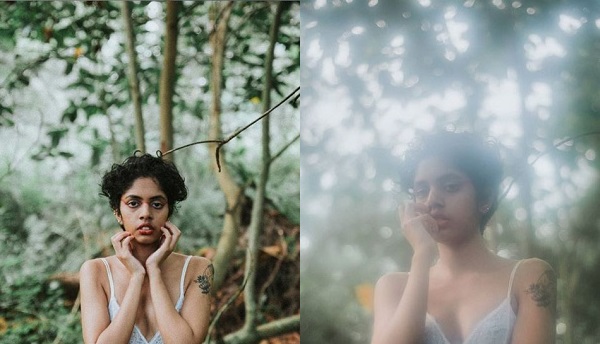
It is easy to feel beautiful now because curly hair is in. Big hair is all over Instagram, and the girls in school who had the straightest, silkiest hair now regularly go for perms. People tell me I am beautiful—a compliment that runs far deeper than ‘pretty’ and perhaps speaks of my confidence to an extent. But this is not about being an ugly duckling turned swan is it? This is about loving yourself—the trite, but necessary lesson that cannot really be taught. This is about being a role model for alternative forms of beauty and the confidence that carries. How different might my life have been if I had seen more women around me with hair like mine?
How I Learnt To Love My Curly Hair
I am definitely a happier person now. I kept my hair short for a long time but it has now begun to touch the back of my neck for the first time in 5 years. Soon, I will don the same hairdo that I had as a pre-teen. The only difference is I won’t be hiding it.
This article was first published on 4 April 2019 and last updated on 10 July 2024.
Also read:
7 Top Rated Hair Oils To Nourish Dry, Damaged Tresses In Singapore From S$7
Cover image: Source

